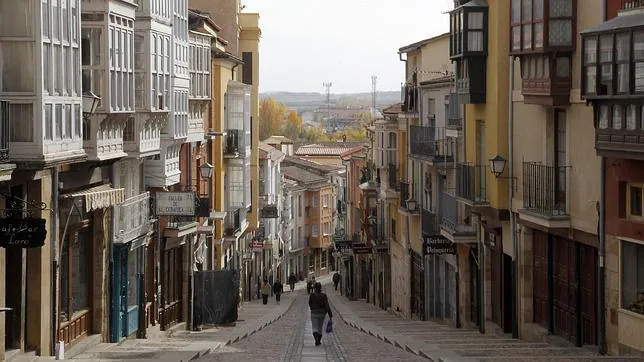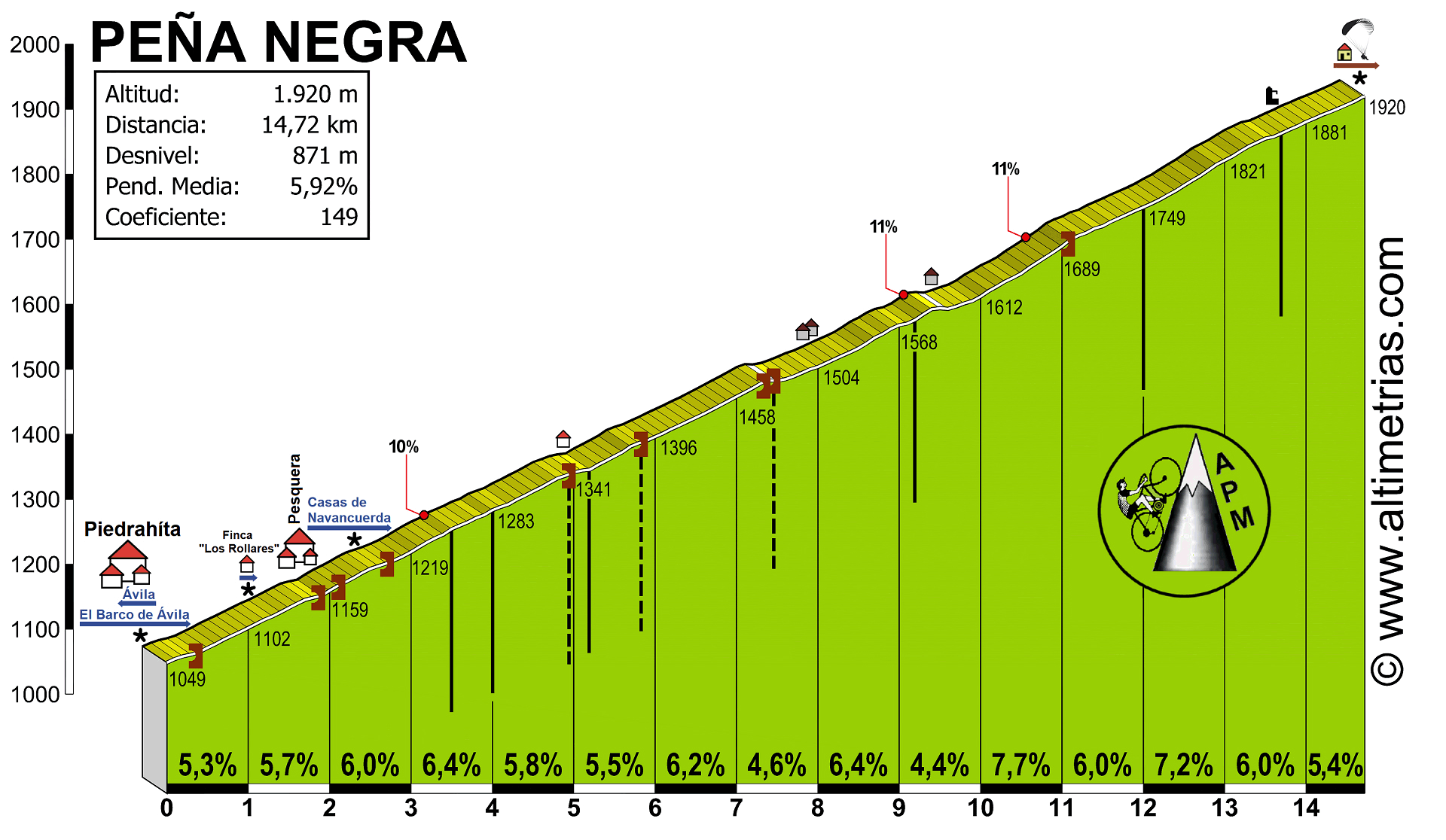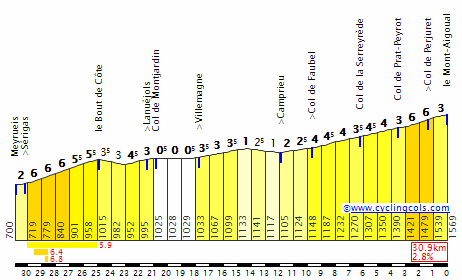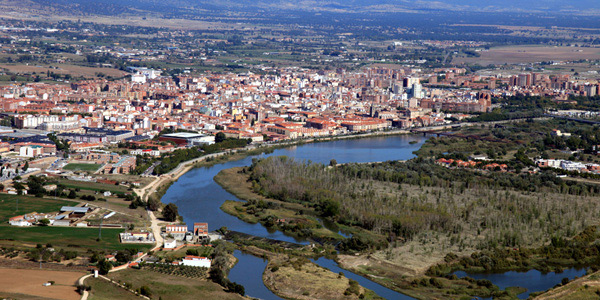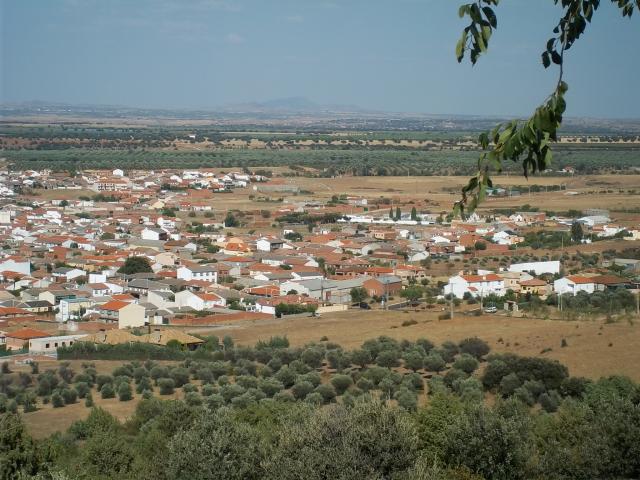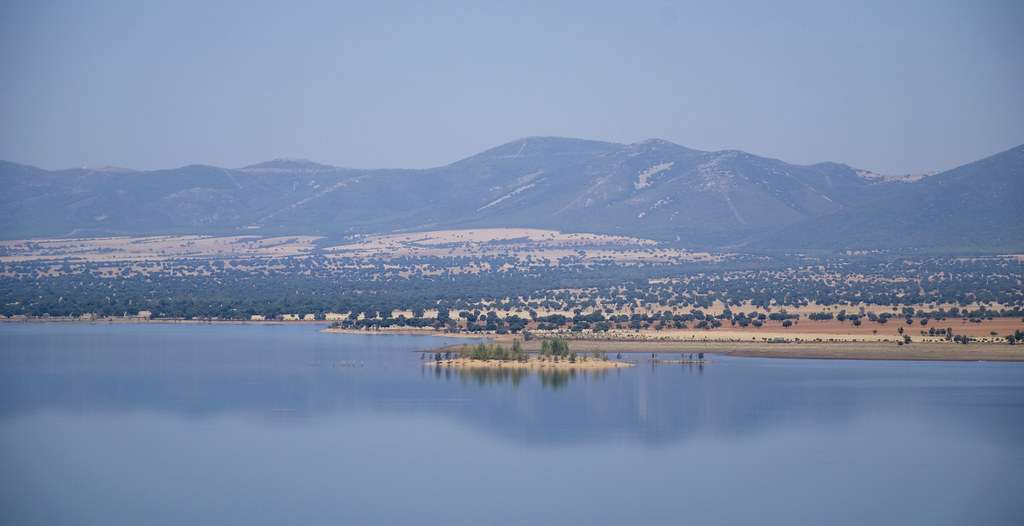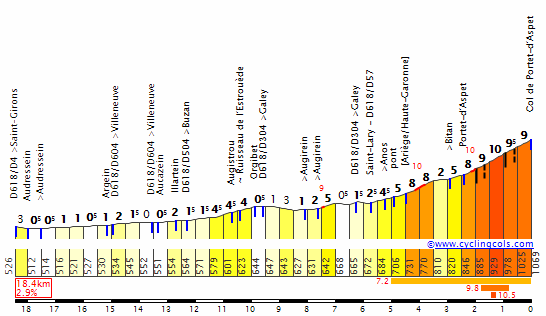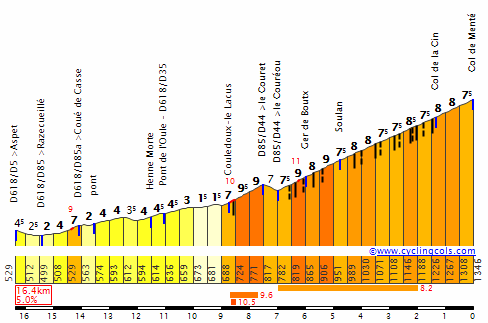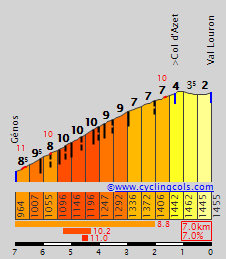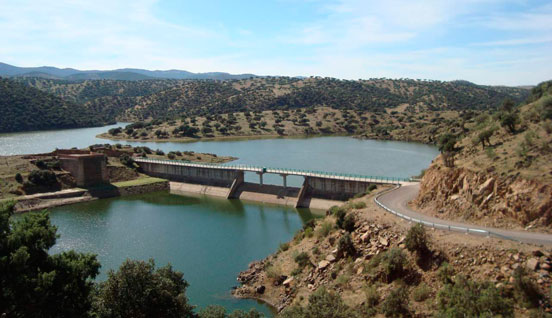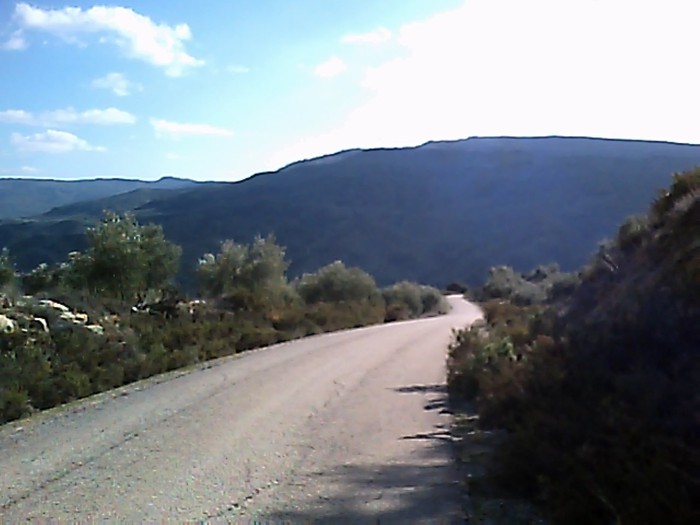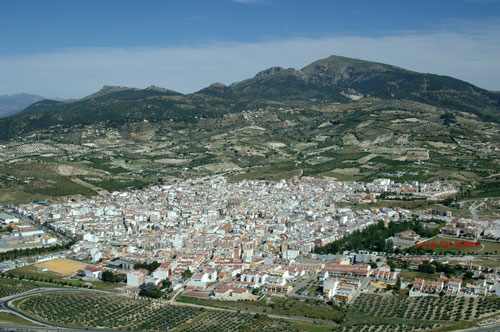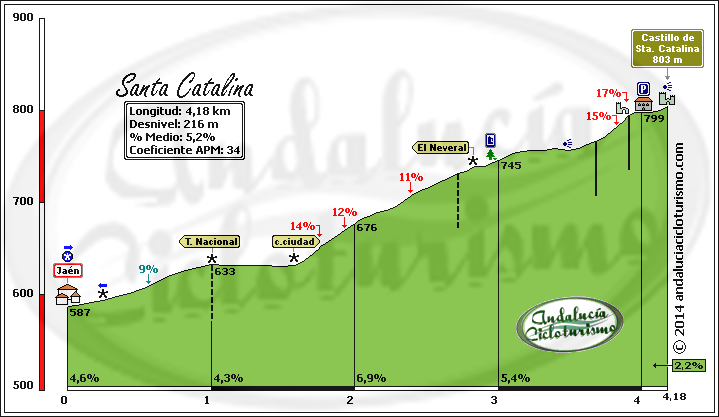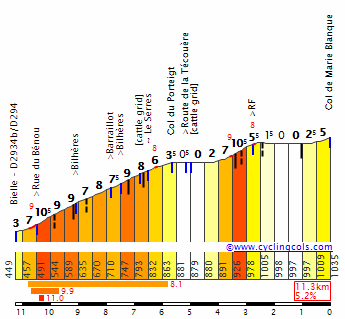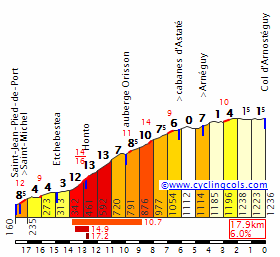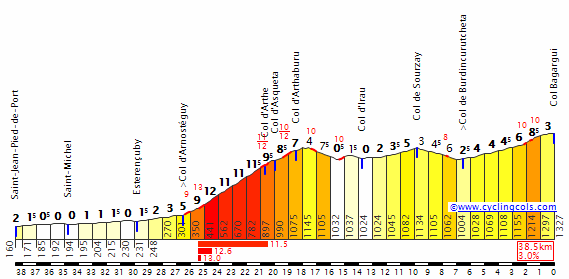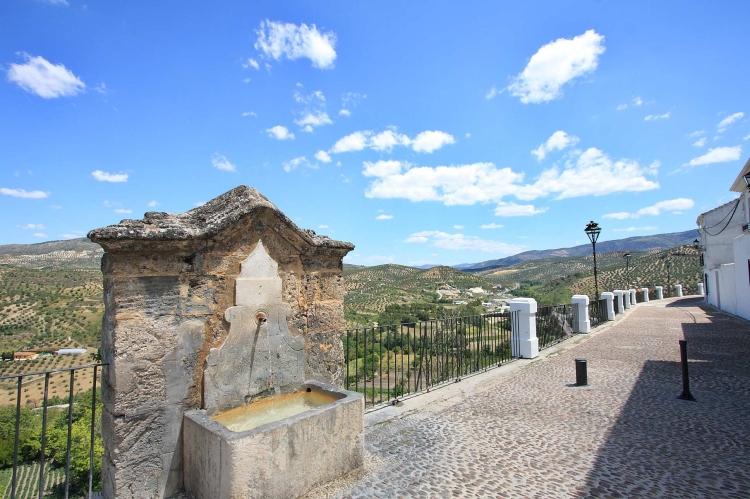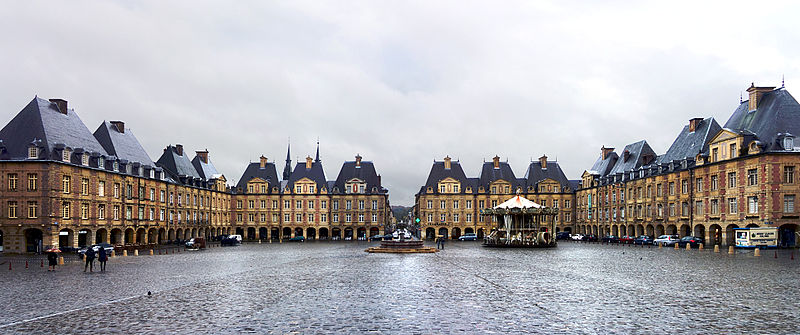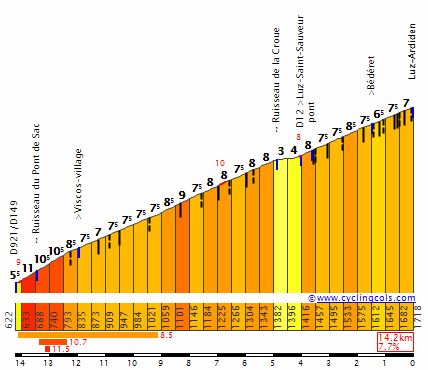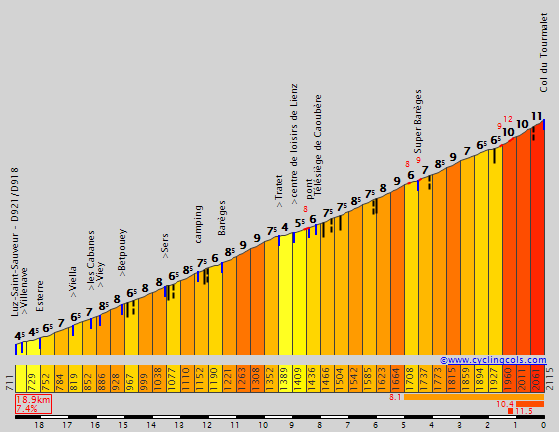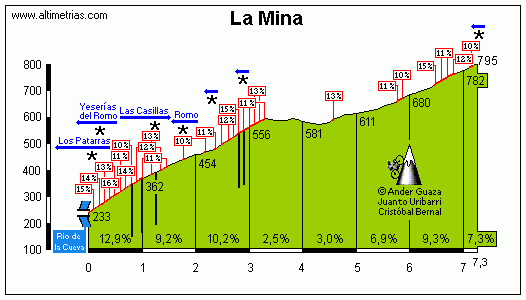Yea, it's weird how they never use that other road. I'm surprised the Route du Sud hasn't had a go at it one time, since they introduced Peyragudes as a pass above Peyresourde, and use Spandelles. It's the kind of thing they'd do, as well, a stage over Tourmalet and using Luz Ardiden as a pass then finish at Luz or Pierrefitte.
Stage 8: Ronda - Colmenar, 177km
GPM:
Alto de La Mairena (cat.2) 5,2km @ 7,1%
Alto de Mijas (cat.2) 5,0km @ 7,1%
Puerto del León (cat.1) 16,3km @ 5,6%
Alto de La Mina (cat.1) 7,3km @ 7,8%
There are only a couple of stages in this Vuelta that Javier Guillén would like, and even then they don't quite fit his template. This is one of them, with the steep stuff late on. But I've thrown in a lot more in the way of earlier climbing than he'd like...

We start our second weekend in the incredibly dramatically located city of Ronda, perched on a clifftop atop a huge gorge in the Sierra de Grazalema, so only a shortish transfer from Ubrique yesterday. This massively historical city spent a brief time as the centre of an Islamic independent republic after the downfall of al-Andalus and the Córdoba caliphate, and in latter years has provided inspiration to a host of literary, artistic and cinematic names, most notably Ernest Hemingway, for whom after Pamplona it is perhaps the Spanish site par excellence, and Rainer Maria Rilke, whose hotel room has remained untouched since the great poet's death in 1926. We cannot dwell on such historical connections though, for we have racing to do. Ronda featured as a stage finish in my last Vuelta, but this time it is a stage start only.
The stage starts with a rumbling stretch as we head towards the Mediterranean coast where we will be spending much of the day's racing. The
northern side of the Puerto del Madroño is not categorization worthy, with an average of only 1,3% - that first stretch including around 5km at 5,0% is probably cat.3, but when stretched out over the whole thing, I really didn't feel it worth it. It will however give a chance for a strongish break to form before the
long, drawn out descent to the water's edge; the road is
wide and the descent at a manageable and consistent gradient without many stern technical tests, so this should be no difficulty for the riders before they interrupt some tourists' Saturday afternoon on the Costa del Sol.
This will be much of the order of the day for this part of the stage - searing heat cooled by the sea, wide open roads through resort towns, punctuated by mountain climbing. Marbella there is but the first of a few such cities we'll be seeing, so there'll be a bit more urban racing than you might normally expect in the Vuelta. On the plus side, once you leave the coast in this region, it immediately jumps up into hilly and mountainous settlements. The first we visit is La Mairena, accessed via a
steep and twisty route. With
5,2km @ 7,1% including a steep section of 2km at 10,3% in the middle of the climb, it's a nice cat.2 to warm the legs up (not that they'll need warming in this heat, mind you, it's August in Andalucía at sea level) for the stage to come before we descend towards
Fuengirola, our next city of sun-loungers, beach-front high-rises and so on, like much of the coast. Our next stop, Mijas, is a hillside town facing south for maximum sunlight but elevated above the coastline; it is a climb well known to the Vuelta, featuring early in stage 3 of
last year's race.
With 3km at 8,7% in the middle of the climb from the side we're using (there are many) and a max of 18% it is not to be sniffed at and is another useful cat.2; it matches up to the first 5km of
this profile. The descent takes us into another famous resort city, Torremolinos (which in the form of 3 Molinos Resort, used to sponsor a Spanish continental team about ten years ago, Jan Hruška and Santos González being their most well-known riders), and then we head on to Málaga, the most famous of the Costa del Sol cities and also a city that's been on the Vuelta menu of late. It hosted the start of the race in 2000 and 2006, a flat stage finish in 2002 (and the start of the aforementioned Ubrique stage) and 2004 (and the start of the following stage, to Granada and the first stage win of Santi Pérez's awesomely hilarious breakout) as well as the much more interesting
2010 stage finishing at the Castello del Gibralfaro, which was won by Philippe Gilbert and which I copied wholesale for the first Spanish stage of my fourth Vuelta, which started in Morocco. The original stage design in fact included the Puerto del León twice, so was much more challenging.
This climb is nice and wide, open to the elements, and pretty regular, however it is also pretty long so the upping of the pace here ought to have an impact eventually. The
profile shows that this is a consistent climb, and it's really about setting tempo. The max is only 10%, and the steepest part is a couple of kilometres between 7 and 8% near the top, so if you're in the right rhythm you'll be fine unless you don't eat and drink enough (always a possibility in the south of Spain). Cresting just over 30km from the line, I don't expect anything other than the most speculative of attacks here; it's all burning off domestiques. There are about a dozen different sides of the climb, and this is the steepest but also the most consistent; we're descending via the Puerto del Santopitár, which entails the section of
this profile from the top to the junction for Colmenar at the 8km mark, whereupon we have another few kilometres of sustained descent ahead of our final climb of the day, and the reason I've called this a Javier Guillén stage.
The final climb of the day averages under 8% and is just over 7km long. We know that Unipublic likes to over-categorize some climbs - the Alto del Cordal, Peña Cabarga and Mirador del Fito as cat.1 spring to mind immediately, for example - but this one is a cat.1 in my humble opinion. That's because this is very much unlike your usual Andalucían climb - this is a piece of Asturian or Basque hell transplanted to the south coast. And it crests just 3,8km from the finish, Xorret del Catí-style.
Is that 3,3km at 10,8% to start the climb? Why yes it is! Would you like no fewer than sixteen ramps of 10%+ in that, as a garnish? Why of course! Pile it on! Is that another 3km at 7% with endless ramps of 11 and 12% appended to the end? Indeed! And the best thing? It's
totally ridable (photo taken from altimetrias.net as so often the case). This is the kind of climb Javier Guillén loves to bring in to the Vuelta, but trying to find a way to get it into a one-climb stage may make him upset, because it's hard to access without going over other ascents. This one should blow the field apart from the bottom, because it's essentially Montée Laurent Jalabert with another cat.3 climb stuck on the end of it. And since Croix-Neuve is a legit cat.2, this ought to be a cat.1.
Once the riders are over the summit, they have a quite narrow but still plenty ridable (it's rather like Xorret del Catí) descent into the small town of Colmenar. The town is well known for its number of apiaries and honey production, and indeed the recently-opened Museo de la Miel is, along with the Ermita de la Candelaria, its most well-known attraction. The town is built into steep hillside, and therefore there are some extremely steep and narrow roads within its centre.
Having just come off a 7km at 8% climb, however, the riders probably don't want any of that, and in fairness it's very difficult to include any given how narrow they are - some of them make Valdepeñas de Jaén look like a highway. There are a couple of technical corners in the last kilometre of the descent, which takes us into the final kilometre, however there is then a nasty 350m
repecho on this road:
Then the final hundred metres or so is downhill to finish at
this square.
All in all, a very tough Saturday stage, with the final climb being steep enough that riders don't have the choice of saving energy for Sunday...


















